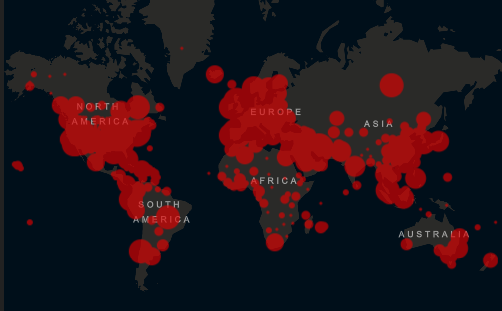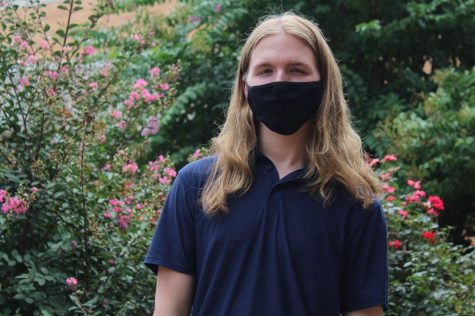Facts Over Fear: Central Students Discuss Pandemic News Coverage

Courtesy of Johns Hopkins University
FACTS OVER FEAR: CENTRAL STUDENTS DISCUSS PANDEMIC NEWS COVERAGE — A real-time map by Johns Hopkins University showcasing all confirmed cases of COVID-19.
April 2, 2020
Instances of near chaos, such as the COVID-19 outbreak, bring immeasurable fear to the people. That fear tends to cloud judgement. People are unsure of who to trust and what to believe. This fear needs to be suppressed; the best way to do that is to fight it with facts. If people know the circumstance and what to do to solve it, their fear will slowly, but surely, dissipate. The news media has been trying to win this battle since the panic began, but this battle is not one that is easily won, especially now.
To the people worried that the truth is not coming to light, many news outlets, whether it be local or national, have allocated specific sections of their broadcasts to the virus. The main goal of these sections is to answer the public’s questions. News outlets are doing their jobs the best they can in this situation. They have limited resources, time, and people, but they are doing the most with what they have.
This is still not enough to overcome the fear for some people, and that is not a bad thing. It is okay to be afraid during this period of worldwide unrest. Fear is never bad. Fear just needs to be controlled, not controlling.
Junior R’Iana Taylor explained her view about how the extensive coverage, although not inherently bad, can get in the way of “normal” news.
“…I feel like the media has focused too much attention on the outbreak. You can’t go a day without hearing something about it. It’s not necessarily a bad thing, but the population as [a] whole doesn’t really get to hear any other news,” said Taylor.
But for some, the coverage on the virus has been enough, too much, actually. Some believe that the coverage has been too much for the public to handle. It is reasoned that the reports put out on the daily cause a panic around the virus because it is being put on such a high pedestal. With the virus being the main thing people see when they turn on the news, it seems likely that the train of coverage will continuously bring fear upon its watchers.
Senior Mya McCullough shared her opinion about the arguably over-extensive news coverage.
“The general public seems very well informed right now, if anything too informed. I believe [news outlets] are creating a bit of unnecessary panic, as the virus is literally the only thing being broadcast anywhere right now,” stated McCullough.
With the end of COVID-19 uncertain in the eyes of professionals, the best thing for people to do is to listen. Acknowledging the facts and understanding what we are all up against ultimately overcomes fear. We will get through this together.





julianna rolle • Apr 3, 2020 at 12:22 AM
The corona virus has caused most of the grocery store to run low on toilet paper as if thats some type of super cleaner or something.Please be reasonable when it comes to toilet paper other people need it as well.
Tzvi Strauss • Apr 2, 2020 at 8:25 PM
I am very shocked by this whole situation. in the beginning, everyone did not think it was a big deal. But now they see it is very serious, but you still have people that think this whole thing is a joke and they are outside doing things if it was like a normal day. And that causes people to get sick and god forbid die. It’s totally not right what they are doing.